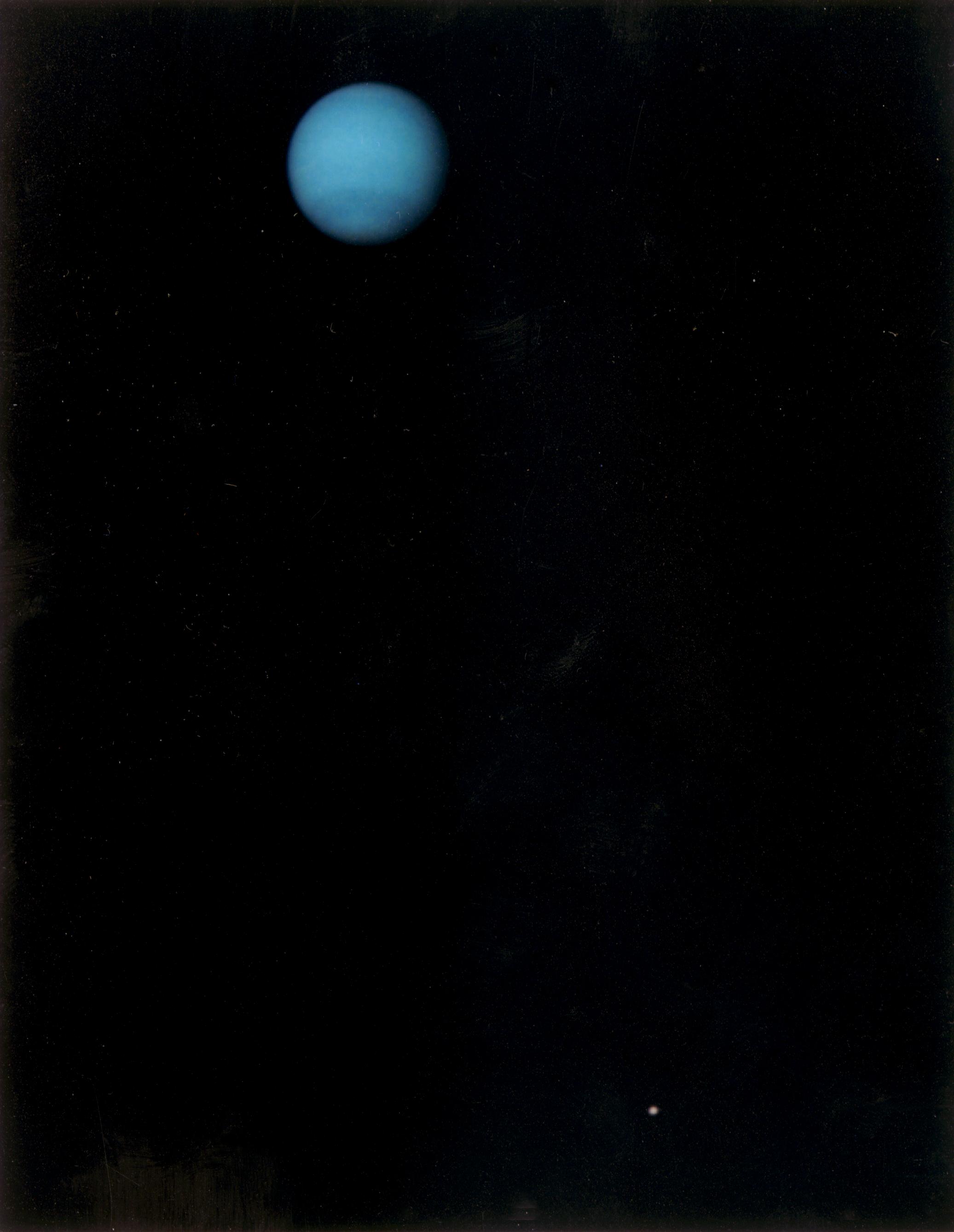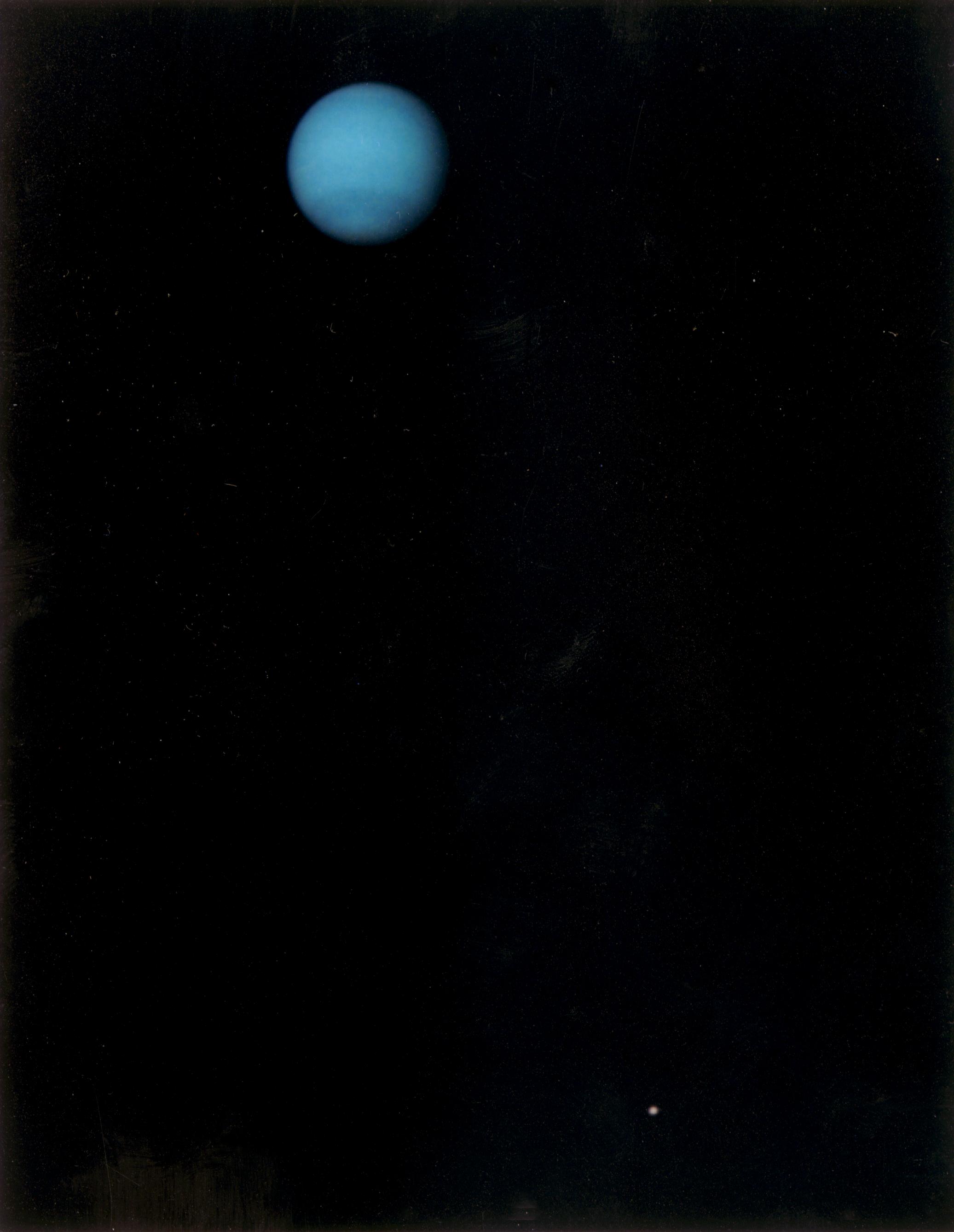Neptune and Triton

| Credit | NASA/JPL |
|---|---|
| PIA Number | PIA01491 |
| Language |
|
This image was returned by the Voyager 2 spacecraft on July 3, 1989, when it was 76 million kilometers (47 million miles) from Neptune. The planet and its largest satellite, Triton, are captured in the field of view of Voyager's narrow-angle camera through violet, clear and orange filters. Triton appears in the lower right corner at about 5 o'clock relative to Neptune. Recent measurements from Voyager images show Triton to be between 1,400 and 1,800 kilometers (about 870 to 1,100 miles) in radius with a surface that is about as bright as freshly fallen snow. Because Triton is barely resolved in current narrow-angle images, it is too early to see features on its surface. Scientists believe Triton has at least a small atmosphere of methane and possibly other gases.
During its closest approach to Triton on August 25, 1989, Voyager should provide high-resolution views of the moon's icy surface and reveal whether Triton's atmosphere has clouds. JPL manages the Voyager Project for NASA's Office of Space Science and Applications.

